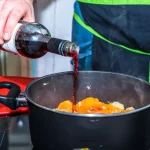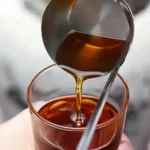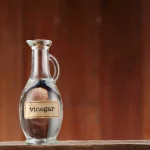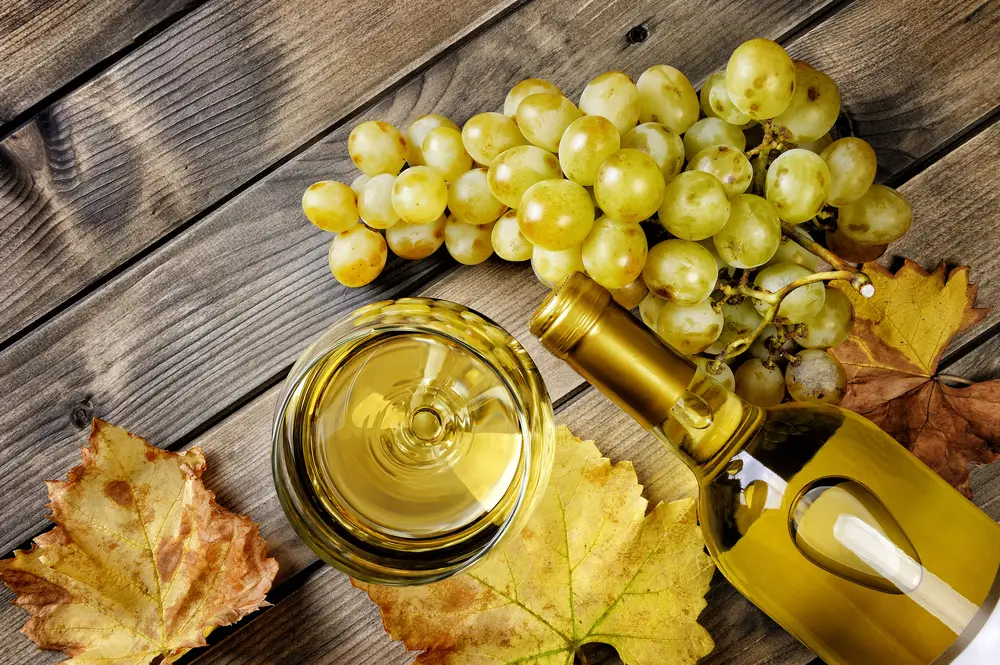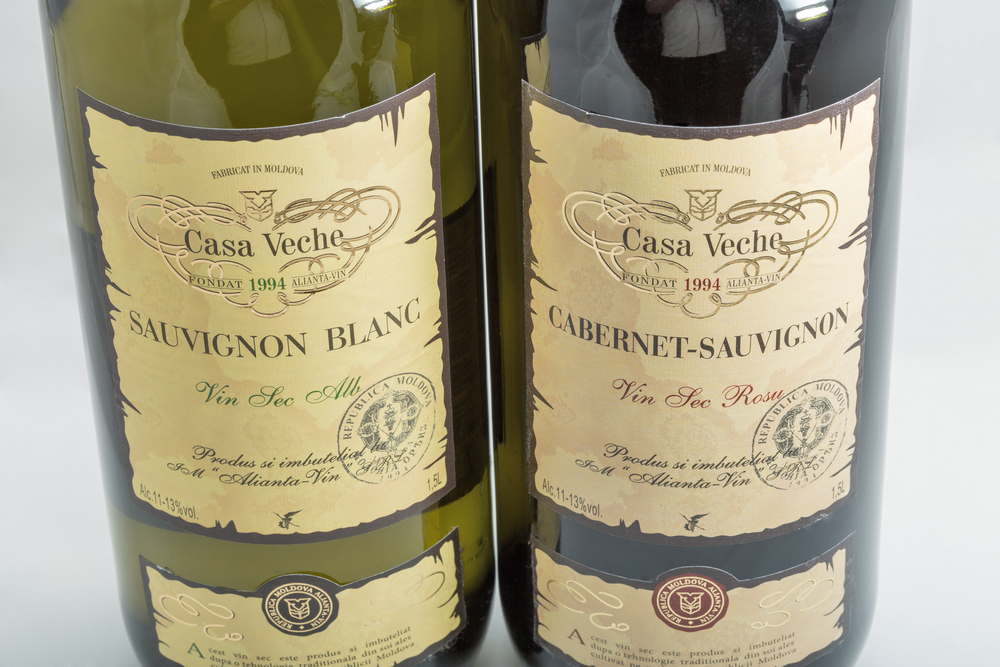White wines are not just a delicious drink for all occasions but a potential tool for amazing recipes! As a result, a growing number of wine enthusiasts are taking their favorite brew and transforming their meals.
In this simple guide, you’ll learn more about the best white wine for cooking and get several tips into food preparation that will make your mouth water while you read.
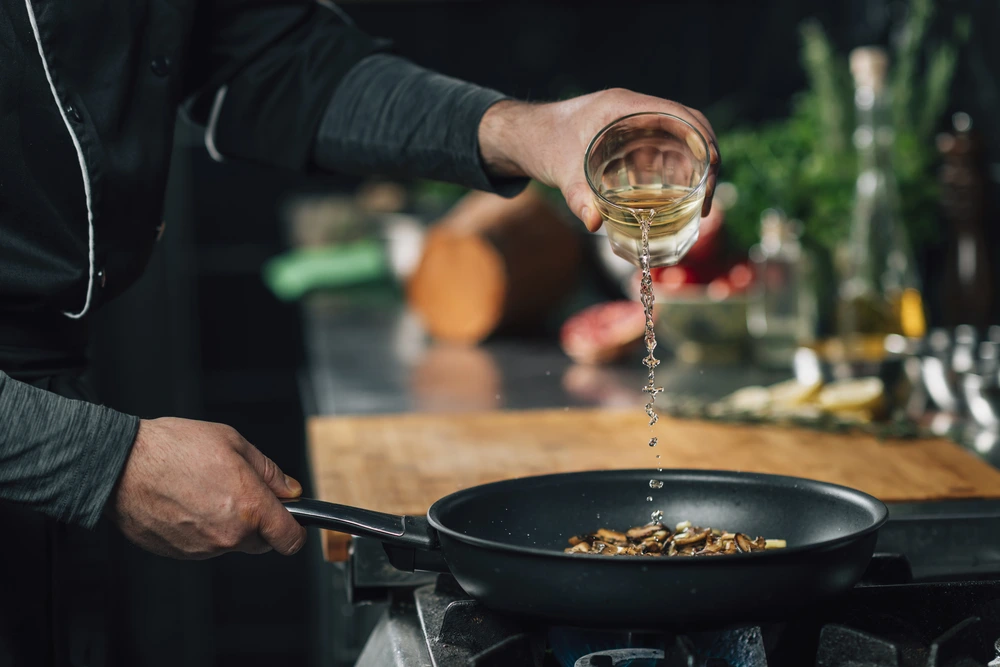
Find Out What The Best White Wine Is for Cooking Your Favorite Meals
White wine is a perfect addition to your kitchen because the best types can add a rich array of flavors and notes to your food.
When properly utilized, white wine will naturally enhance your food without overpowering it. In this way, you can create fantastic meals that you couldn’t otherwise cook.
White wine typically doesn’t leave behind the kind of sweet aftertaste you get from many reds, though red wine can be helpful in many cooking situations.
Handy Tips for Cooking With White Wine
Cooking with white wine can be very rewarding if you know what you are doing.
But, unfortunately, many people aren’t sure how to handle this process and end up making many mistakes. Their errors start with choosing the wrong type of wine or preparing the food with the wine improperly.
That’s why we collected a handful of simple tips that will make this process easier for you.
Read through each of these steps to understand which you should consider for your needs. The steps below start with picking the best white wine for cooking and move on to cooking itself:
- Avoid cooking wines, as these are usually inferior quality, and add salt and other ingredients that can affect your food’s taste.
- Buy a mid-priced white wine for your cooking, as a cheap bottle will be too poor, and an expensive bottle is best for drinking.
- Try to stick with dry white wines (like Pinot Grigio or Sauvignon Blanc) to minimize extra sweetness to your food.
- Avoid wines like Marsala, Sherry, Port or Madeira if you don’t have white wine, as they will change the texture and taste of your food.
- Make sure that you marinate your foods in white wine for the proper amount of time, which can be overnight for many meals.
In a later section, we’ll talk more about properly pouring white wine while cooking and other critical steps. First, however, you can start with these tips to make it easier to choose and use white wine for your many cooking needs.
But which white wines are the best for cooking?
Best White Wine for Cooking
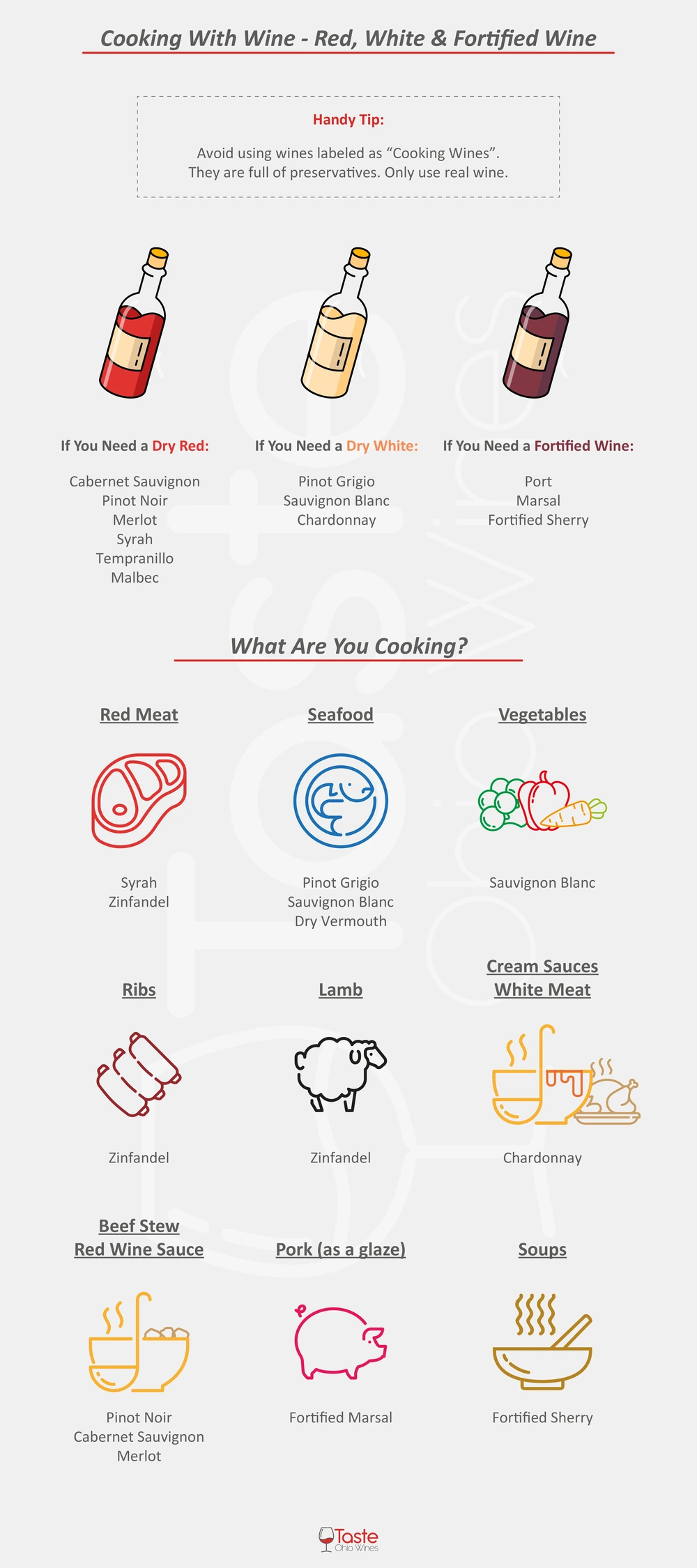
Share this Image On Your Site
In our opinion, a Pinot Grigio is hard to beat when cooking with white wine.
No matter what brand or winery you choose, a good Pinot will provide you with the extra texture and slight flavor modifications that you want when you cook with outstanding white wine.
Pinot Grigio reduces very well when cooking and doesn’t leave behind much of a bitter aftertaste. Just as importantly, it can work well with many types of foods to produce a diverse and engaging range of flavors.
Any serious chef should have a bottle of Grigio for their cooking needs.
Bonus: It’s a low calorie wine, too.
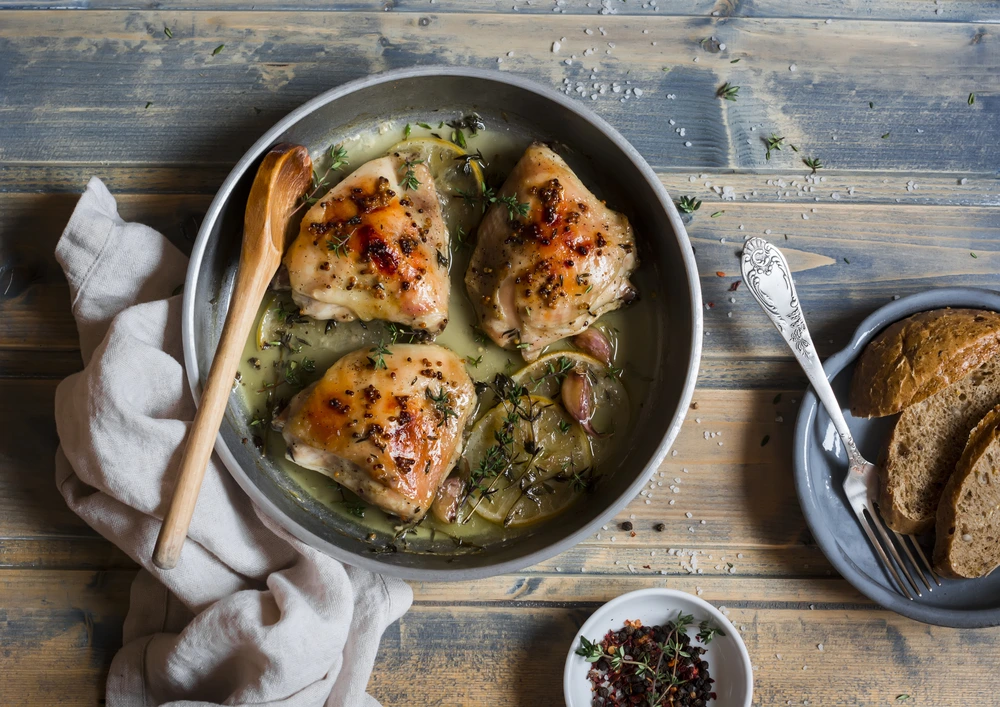
If Pinot Grigio is not to your taste, you thankfully still have many options. A good Chardonnay will work in a pinch if you do not want to use Pinot.
It lacks the same kind of punch you might get from Pinot but is often a little easier on the stomach for people with more sensitive digestions.
Likewise, a good Sauvignon Blanc is an excellent option for many types of meals.
It possesses a bright flavor, one with a rather herby aftertaste that will blend with various ingredients. While not quite as diverse as Pinot, it should help you with many great meals.
In many ways, your best white wine will vary based on what meal you choose. While we think that Pinot Grigio is diverse enough for most types of food, you may want to try other options based on the food you eat.
Handy hint: Want to try something different? Try cooking with rice wine vinegar.
Below, you can read more about this critical topic.
Best White Wines for Cooking Your Favorite Meals
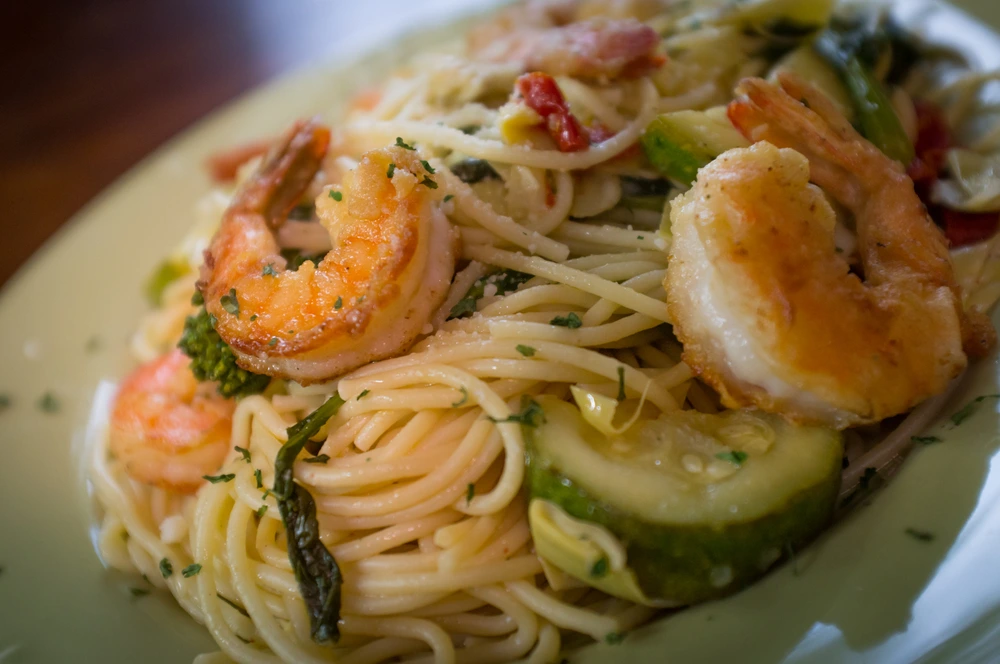
Choose a Pinot Grigio whenever you’re cooking shrimp or most seafood, as it adds a bright flavor that doesn’t overpower the natural taste of the food itself.
Dry Vermouth may be helpful as an alternative to Pinot in this situation, depending on your preference. Pinot also goes great with risotto, seafood pasta, and most types of meat-rich foods.
Chardonnay blends best with cream sauces due to its unique texture and flavor.
It possesses oak and nut notes that work well in many sauces.
That said, you should also be aware that Chardonnay may have a somewhat bitter aftertaste if you reduce it too long. Be careful with how you handle this wine.
Sauvignon Blanc is another great option for meat or fish because it can add a lemony aftertaste that can enhance the flavor of your meal.
Fresh trout, salmon, and other fish work particularly great with this wine, especially when mixed with various types of rice and vegetables to your dish.
Sauvignon Blanc also works well with fondue recipes.
Best Dry White Wines for Cooking Recommendations
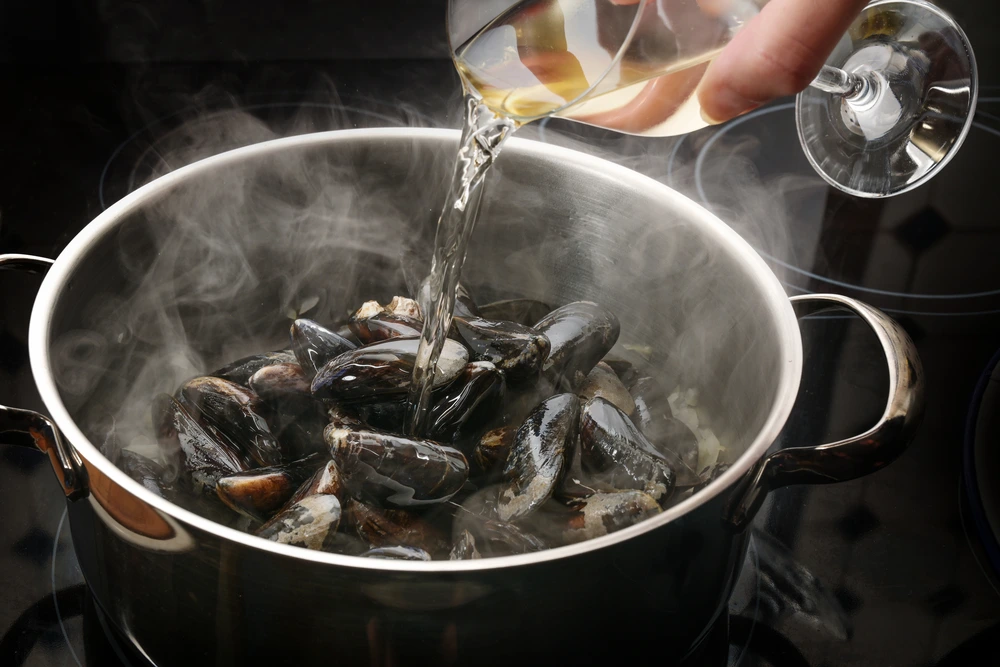
If you plan on cooking with white wine, it is crucial to keep a few simple recommendations in mind before you start.
First, you need to cook the white wine with the food or the sauce as it prepares. Many people mistakenly use white wine as a sauce or just pour it on after the food is finished.
This mistake causes the white wine to overpower your food’s taste and makes it inedible.
Typically, you should add the wine early in the cooking process to ensure its flavors pass to your food. Most recipes call for at least 10 minutes or so of simmering before doing a taste test.
Then, if you find that you need more wine, add just a little more and wait another 10 minutes.
What do you do if you have added too much white wine?
First, turn down the temperature of your food and let it cook a little longer. This longer cooking time will reduce the white wine further and cut back slightly on its excessive bite or unnecessary, lingering aftertaste.
The dryness of your white wine must also be carefully considered before you start cooking.
A dry white wine goes best with light dishes that require just a slight change in taste. Shrimp, chicken, veal, vegetables, seafood, and pork all cook best with a dry white wine, so choose an option that makes sense.
That said, you can also use a fuller or sweeter white wine with spicy dishes or anything with a heavy sauce.
For example, many sauce-rich Asian foods blend perfectly with sweet white wines. You may also use white wine with various Indian foods, particularly if you want an extra kick.
Don’t forget to taste-test your wine before using it to get a feel for its aftertastes. Then, match these extra flavors to your dishes, such as using wine with apple notes to freshen up your steak and give it a richer and fruitier taste. A clever chef uses wines like a sauce or marinade in this way.
Specific wines we recommend:
- Cavit Pinot Grigio NV
- Mouton Cadet Sauvignon Blanc
- Black Box Sauvignon Blanc
- Alta Luna Pinot Grigio NV
- Shrimp Cocktail (and More) Wine Pairing Guide - 09/06/2022
- What Wine Serving Sizes Look Like: Standard Size and More - 08/06/2022
- How Much Sugar is in Wine: Glass and Bottle Sugar Content - 08/06/2022

